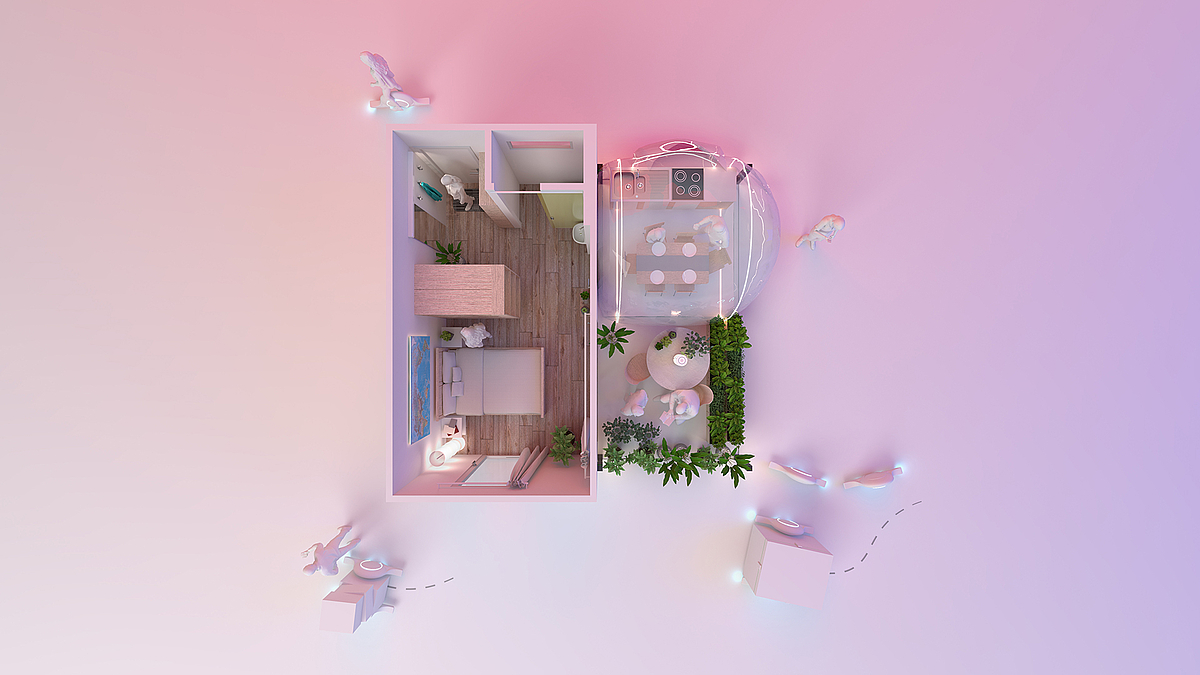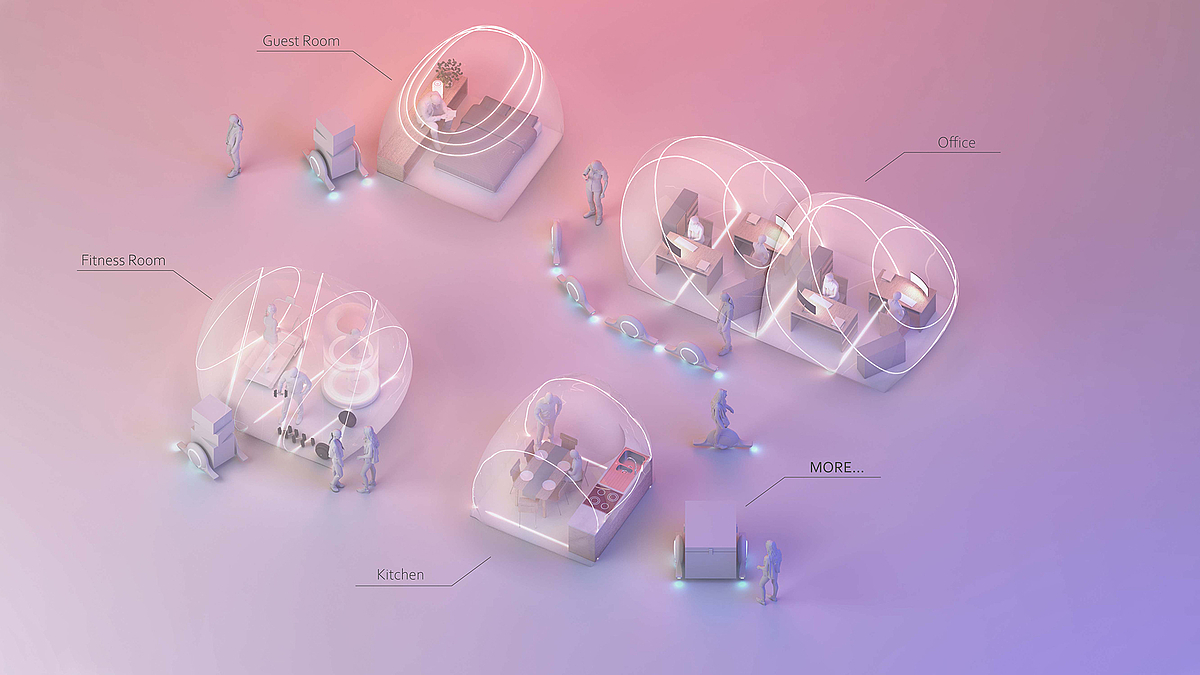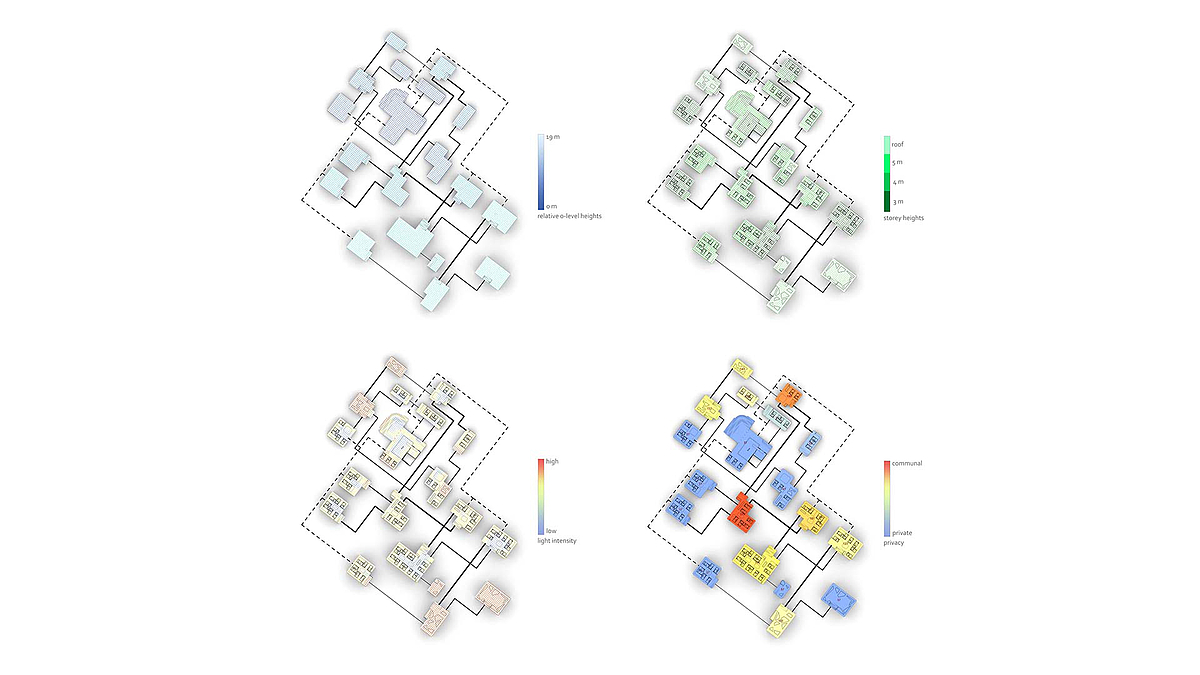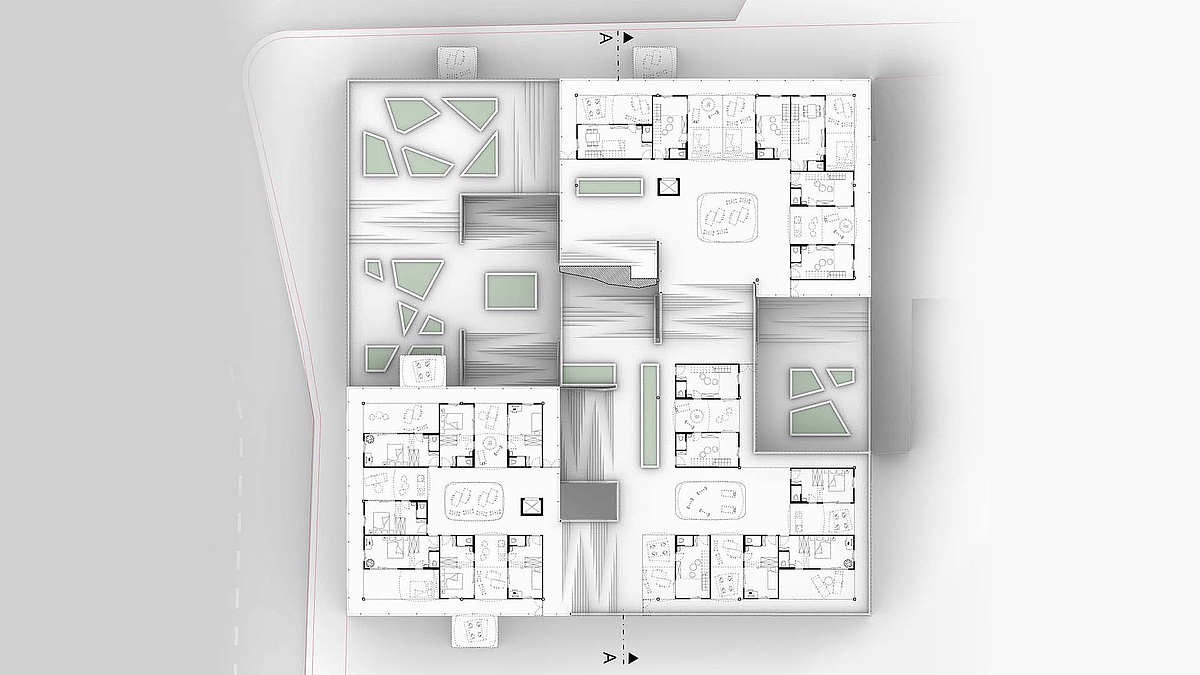Das Projekt Domestic Automatons erforscht räumliche Transformation und Kinematik als Mittel zur Gestaltung und Entwicklung neuer Wohntypologien.
Projekt
No matter how many rooms you own, you could only use one room each time. With limited storage on your phone you can always replace unnecessary apps with new apps. In a similar way if some permanent rooms, which we don't need all the time, could be replaced with temporary mobile rooms, the efficiency of the living space would also be dramatically increased. If a large number of robots in charge of transport are shuttled through the building with people, an access management system would be necessary to organize the movement of robots to increase the transport efficiency and to reduce the interruption to people´s lives. On the other hand, people would also be reminded, if they inadvertently step into a private area. The inflatable units are lighter in weight than normal walls and take up almost no volume when transported. At the same time the size and shape of an inflatable is always a mapping of the surroundings when inflated. Inflatables could help us to quickly define new spaces in our residence.
The specific site for the design is in downtown Los Angeles on 6th/Maple St. It currently houses the Star Apartments by Michael Maltzan Architecture, a social housing mixed-use development for the Skidrow Housing Trust. The existing building contains 102 apartment units, a clinic, a community garden etc. Each unit measures approximately 27 m². The north corner faces the city centre, is adjacent to the crossroads and brings together major pedestrian flows. Therefore, the main entrance will be located the north corner. On the back side, the delivery could reach the warehouse area in the ground floor through the south corner.
The platforms for living units are connected with steps and ramps in oblique condition, so that the robots could freely transport modules and goods in the building without vertical movement. The lifts serve the inhabitants only. The platforms here are unfolded to give us a global view of all the floors at the same time. The continuous lines stand for the "ramp-step" connections between platforms and the dashed lines mean vertical connections via lifts. According to these analyses the positions of normal or duplex units, the module area, and the open spaces are defined. This 2D plan could also be used by robots to organize and optimize their delivery path.













